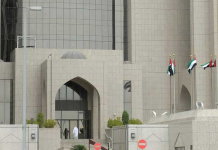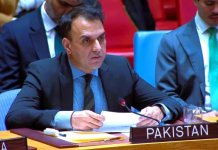By Wu Qiuyu, People’s Daily
According to annual reports of Chinese listed banks, greenness has become a defining character of the high-quality development of China’s banking sector.
Multiple banks have reported growing businesses of green credit, and their green financial products such as green bonds and green wealth management have been constantly enriched.
For instance, the balance of green loans of the Industrial and Commercial Bank of China stood at 3.98 trillion yuan ($580 billion); the China Construction Bank has been working to advance green leasing, inclusive leasing and digital upgrading; the Bank of China has issued 87.7 billion yuan of green bonds.
Under the guidance of the philosophy that “lucid waters and lush mountains are invaluable assets,” Chinese financial institutions have been actively engaged in green finance, offering various types of financing support for ecological progress.
Statistics released by the People’s Bank of China (PBOC), the central bank of the country, outstanding green loans in China has so far exceeded 22 trillion yuan, about 10 percent of the country’s total loan balance. Besides, the country’s green bonds have hit more than 2.5 trillion yuan, among the highest in the world.
Aquaculture is a traditional business of rural residents in Ma’an community, Nan’an neighborhood, Gaoyao district of Zhaoqing, south China’s Guangdong province. It was because of green loans that the community has witnessed rapid development of photovoltaic (PV) power generation. Today, fish farms in the community, together with the PV panels above them, are bringing both economic and ecological benefits to local residents.
Promoting green and low-carbon economic and social development is a key step in achieving high-quality development. It is estimated that fulfilling carbon peak and carbon neutrality commitment will require an enormous amount of financing of about 100 trillion yuan. Therefore, green financing enjoys huge space of development and bright prospects, and provides important opportunities for the high-quality development of the financial sector.
The development of green financing couldn’t be achieved without a complete policy system and market environment.
Over the recent years, the PBOC has launched a carbon-reduction supporting tool and a special re-lending program for supporting clean and efficient utilization of coal to advance green development in a science-based manner.
As of the end of 2022, the central bank had lent more than 300 billion yuan via the carbon-reduction supporting tool and helped banks lend 600 billion yuan to green projects, contributing to about 100 million tons of carbon reduction.
Practices proved that structural monetary policy tools have not only supported the development of green financing in a targeted manner, but also mobilized financial institutions to allocate financial resources in a way that’s market-oriented.
Innovation remains an important approach to improving green financial services. Green development is related to every aspect of people’s work and life, and thus financial institutions need to develop more new products to meet the demand of the society.
It is shown in the annual reports of listed banks that many of them have started developing green financial products and making innovation in relevant services. For instance, the Ping An Bank has launched a personal carbon account program on its mobile application to promote green lifestyles, and the China CITIC Bank has issued green and low-carbon themed debit cards and launched a personal carbon account program to encourage green consumption.
To realize the goals of carbon peak and neutrality is not a 100-meter dash, but a marathon. Compared with traditional financing projects, green projects usually have longer investment cycles, lower incomes and need large investment, which require financial institutions to be patient and provide green development with more long-term capital assistance that’s lower-cost and sustainable. They should realize that green financing projects are not designed for quick return.
Besides, it should be noticed that green transition is a process that cannot be achieved at one stroke. It calls for well-coordinated relations between green and traditional projects and appropriate financial support based on economic and social development, so as to make the transition smooth and avoid potential financial risks.
Multiple banks vowed to keep working in the green financing sector in their 2022 annual reports. Green financing is an important propeller of high-quality economic and social development, and a stable source of energy for the transition of the financial industry. It is believed that the constant development of green financing will make more contributions to China’s ecological progress.

















